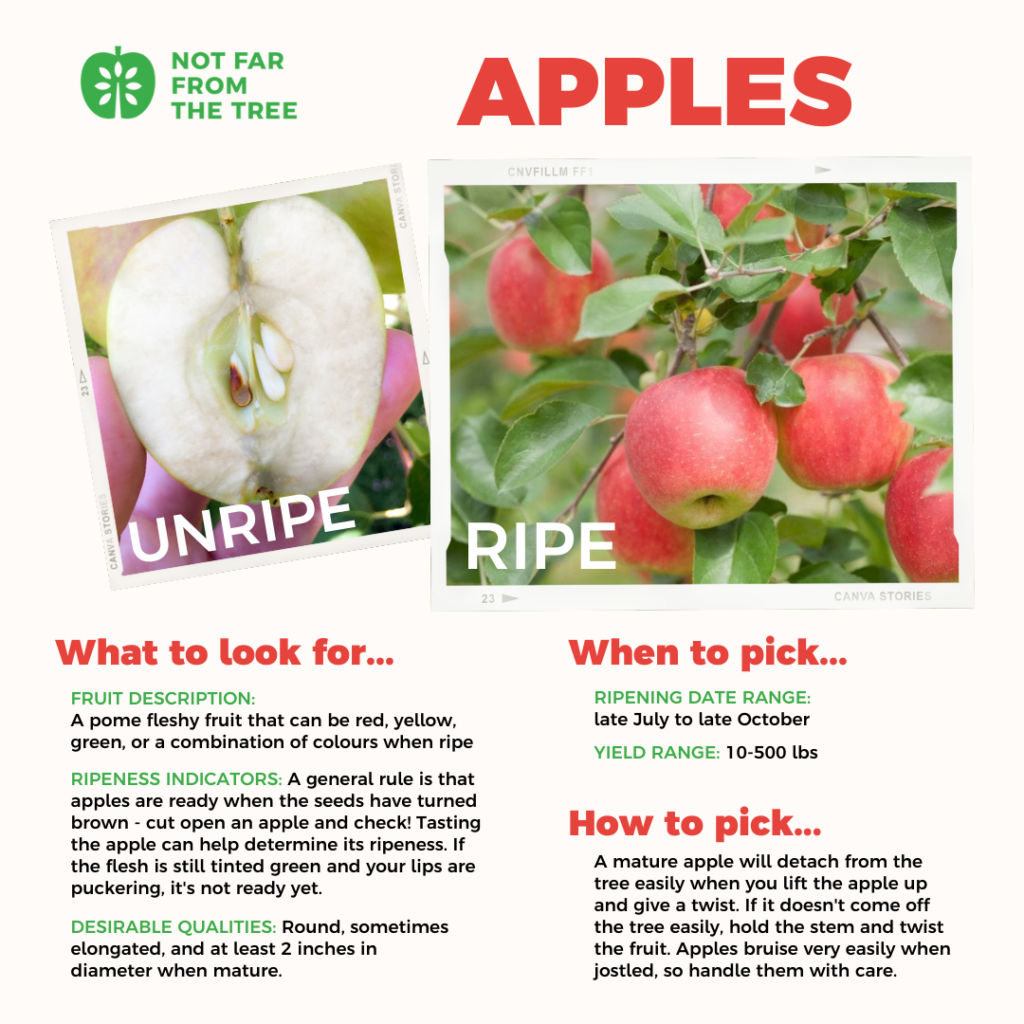Ripening Guide
Learn more about the many fruits of Toronto's Urban Orchard
Apples
Toronto has an abundance of apple trees, and some local trees can produce over 500 pounds of fruit in a season! Apples can be red, yellow or green when ripe, or a combination of these colours. They are round, sometimes elongated, and at least two inches in diameter when mature – apples that are smaller are considered crabapples.
- July
- August
- September
- October
How to tell when apples are ripe: A general rule is that apples are ready when the apple seeds have turned brown. Cut one open and take a look at the seeds to check! We also recommend a taste test – depending on the variety, you can expect a sweet or sour taste. If you take a bite and the flesh is still tinted green (and your lips are puckering), it’s not ready yet. Also, a mature apple will detach from the tree easily when you lift the apple up and give it a twist.
When to submit a pick request: We’ll need some advance notice to schedule your pick, so please submit a fruit pick request 3-5 days before your fruit is ready. A good time to do this is when the seeds of the apples are brown or when the apples taste sweet and juicy. Apples on the outside of the tree and those that get more sun exposure will ripen first, so check apples on different parts of the tree for ripeness, including the lower branches.
Note: Falling apples are not necessarily an indication that they are ready to harvest.
Picking tips: Our favourite picking techniques for apples is the eye to the sky or rolling method. Turn the apple upside down and give it a twist. If the fruit doesn’t come off the tree easily, hold the stem and twist the fruit. Apples that are too underripe may be difficult to pick. Apples bruise very easily when jostled so handle them with care, like you would eggs.
Eating tips: Apples tend to taste best a few days after they’ve been picked.
Storage tips: Apples can be stored for a long time at room temperature, and for even longer in cold storage.
Apples give off a gas called ethylene that causes nearby fruits and vegetables to ripen more quickly, so keep this in mind when finding a place to store them. The saying “one bad apple spoils the bunch” is true! A bruised, rotten, or damaged apple gives off more ethylene and can cause the rest of the group to ripen quickly and even rot. Sort through your bounty and eat bruised or damaged apples first, or turn them into homemade applesauce or baked goods!

Pruning Tips
You want to keep your apple tree pruned to one central leader (aka the central trunk). Remove the 3Ds – dead damaged and diseased wood, and follow the CAC rule – remove any crossing, acute, and clustering branches. Your final result should look like a pyramid (or Christmas Tree) will well spaced horizontal branches. Make sure the upper branches are shorter than the lower branches. It’s said that a bird should be able to fly through an apple tree without its wings touching a branch! To spur growth, the best time to prune your apple tree is in late winter to early spring.
-
Have an Apple Tree? Register it now.
-
Want to pick Apples? Join our Picking Team.

